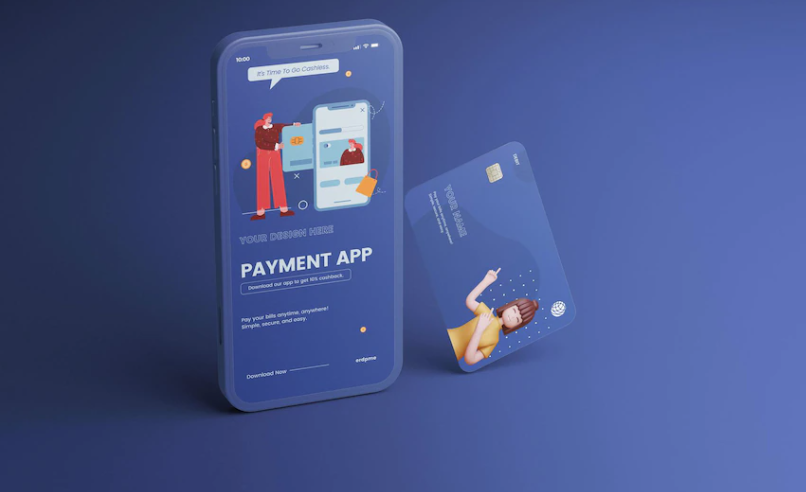A payment gateway is a key component for any company that wants to offer mobile app-based products or services. It ensures the secure transfer of sensitive cardholder data and enables online payments.
The complexity of integrating a payment gateway into a mobile app depends on the amount of manual, backend development needed. Various modern, ready-made payment gateways can easily fit into mobile apps and suit the mobile user experience. However, for companies with specific or custom needs, integrating a payment gateway is more challenging, requiring extensive knowledge of app development, IT security, and compliance requirements.
Table of Contents
ToggleWhat is a payment gateway?
With a payment gateway, you can collect credit and debit card information from customers. It then sends the payment information securely for processing. Gateway technology allows customers to easily pay for products and services with a credit or debit card. Because customers interact with a gateway directly, it is often called “front-end” software.
Adding a payment gateway to a mobile app step-by-step
Step 1- Research and choose a mobile payment gateway provider
Before you start integrating a payment gateway into your mobile app, compare different providers to find the best fit for your company and your customers.
Some questions you should ask potential gateway providers are:
- What security features do you offer in your gateway?
- How do you handle PCI DSS compliance?
- How much do you charge, and can you negotiate the fees?
- How do you optimize your gateway for the mobile user experience?
- How can we personalize the checkout screens to match our brand?
- Does your gateway support recurring payments?
- What card types and mobile wallets can you process?
- Do you have localization options for international payments? What currencies can you accept?
Step 2: Set up a merchant account for accepting payments
You need a merchant account to accept payments. It is where the money from each transaction is temporarily stored until it is cleared and transferred to your business bank account.
Some modern payment gateway providers also act as merchant accounts, letting you control both pre-transaction settings (e.g., payment methods, security features, recurring payment options) and post-transaction processes (e.g., chargebacks, refunds, fund transfers, etc.) in one place. However, if you want to keep your merchant account separate, make sure that the payment gateway you select works well with that merchant account.
Also read:
How an ecommerce payment gateway can enhance your online transactions
Step 3: Configure payment methods and other gateway settings
After you have selected a payment gateway provider and created an account with them, sign in to that account to adjust the settings and personalize the user interface. This involves:
- Picking which payment methods you will offer to customers, such as card types (Visa, Mastercard, etc.) and mobile wallets (Apple Pay, Google Pay, etc.).
- Activating and setting up the conditions for subscriptions or recurring charges, if required.
- Choosing which countries and currencies you want the gateway to support.
- Modifying the checkout page to include your company’s brand fonts, colors, and logo.
Step 4: Obtain the gateway’s API and integrate it through code, SDKs, or widgets
After you have set up your gateway account and adjusted the gateway settings, you need to integrate the gateway into your mobile app. This process depends on the payment gateway you have picked, but many providers make it fairly easy for developers to integrate the gateway using their Application Programming Interface (API). The gateway’s API is what enables the app to access its payment processing infrastructure within the app, in real-time.
Common ways of adding the payment gateway’s API include:
- Manual Coding – Developers can add the gateway’s API manually, with custom code they’ve written themselves.
- SDKs – Software Development Kits (SDKs) are sets of pre-written code libraries and tools that developers can use to add payment gateways to mobile apps with minimal manual coding required.
- Widgets – Some payment gateway providers offer payment widgets that developers can add to their mobile apps with a single line of code.
Step 5: Test and optimize the gateway
The last step of integrating a mobile app payment gateway is to test it in a non-live environment to ensure everything is functioning as expected. Most gateway providers let merchants and their developers run test payments to detect errors and fine-tune until the checkout process is smooth.
After everything is satisfactory and working well, you can turn the gateway on and go live! Once live, keep an eye on the payments from within your gateway and/or merchant account to further confirm transactions are processing correctly and as planned.
Also read:
Best payment gateway for e-commerce websites in 2023
Factors to consider when choosing a mobile payment gateway
Security, compliance, and hosting
When looking for a payment gateway, it’s vital to make sure it has security measures to safeguard your customers’ sensitive data. These security features may include encryption, tokenization, multi-factor authentication, 3D Secure, and real-time fraud detection, among others.
Your security and compliance requirements will depend on who is hosting the payment gateway. There are three main options for payment gateway hosting.
API-hosted gateways (Suggested for most merchants):
With API-hosted payment gateways, customers stay in the app without being redirected during checkout. However, the payment gateway provider—not the merchant—is in charge of their sensitive card data.
Self-hosted gateways:
Self-hosted gateways A self-hosted payment gateway is one that the merchant runs on their app or website. This option demands a lot of backend development and puts all security and compliance obligations on the merchant.
Hosted gateways:
When customers use hosted payment gateways, they have to leave the original website and go to the payment gateway provider’s website to complete their checkout. This can interrupt the user experience and make customers lose interest or trust in their purchase, especially mobile app users who are used to a fast and smooth checkout process.
Fees and fee structure
Before choosing a mobile payment gateway, it’s important to know the costs and fee structure involved, as they can differ a lot from one provider to another. Payment gateway providers usually charge merchants in one or more of the following ways:
- A fixed monthly fee
- A fee per transaction
- A combination of a fixed monthly fee and a fee per transaction
Card transaction fees are often based on a percentage of the payment amount, plus a small, fixed charge. For instance, a gateway may charge 2.9% + £0.20 for each transaction. Other costs to be aware of are any one-time setup fees, refund fees, withdrawal fees, chargeback fees, PCI compliance fees, and account termination fees.
Merchants may also have the option to negotiate fees with their payment gateway provider, depending on the size of their company and the number of transactions. Many gateways may offer lower fees as the card payments increase.
Currencies and service area
Choosing a payment gateway that caters to international customers is important if you want to process international payments through your app.
Make sure that the payment gateway works in all the countries where you want to do business. You may also want to choose a payment gateway that automatically changes to the local language and lets customers pay in their currency.
Available payment methods and types
Different payment gateways have different capabilities to process various card types and mobile wallets. Think about which payment methods you want to offer your customers and check if your gateway can support them. For instance, do you want to accept card types like Visa, Mastercard, Discover, etc.? Do you want to let customers pay with mobile wallets such as Apple Pay or Google Pay?
You also need to make sure your gateway can handle recurring payments if you need them, for example, for subscription products or services, or recurring charitable donations.
Branding and customization
To match each merchant’s specific brand, many payment gateway providers let you customize the checkout experience. Choose a payment gateway that lets you add your company’s logo and use your brand colors and fonts.
The look and feel of your mobile app payment gateway is not only about aesthetics. It also makes customers feel that they’re in a safe and familiar environment, under your trusted brand. It also helps customers move smoothly into the checkout process without any distractions or confusion. All of this helps to boost conversion rates and, as a result, revenue for your business.
Mobile user experience
Mobile shoppers, who are often “on the go”, need a seamless checkout experience and don’t want to deal with a multi-step payment process.
Merchants can look for payment gateways that are made for mobile apps and mobile users when they choose a payment gateway for a mobile app. This makes sure the gateway interface adapts to the user’s device and that the checkout process happens within the app. Mobile users also tend to like paying with a mobile wallet, such as Apple Pay or Google Pay, so it’s a good idea to choose a payment gateway that supports mobile wallet payments.
Customer Service
To offer your customers the best possible service, it’s a good idea to choose a payment gateway that gives merchants great customer service too. When you research a payment gateway, check the kind of support and availability they offer merchants and their IT teams.
Consider choosing a provider that offers the following types of support:
- Knowledge center with helpful guides and documents
- Community forum where developers can ask other developers questions about integrating and managing the gateway
- Multiple ways of contacting the support team, including:
- Phone support
- Email support
- Live web chat
- 24/7 availability for troubleshooting crucial issues in real-time





Leave a Reply